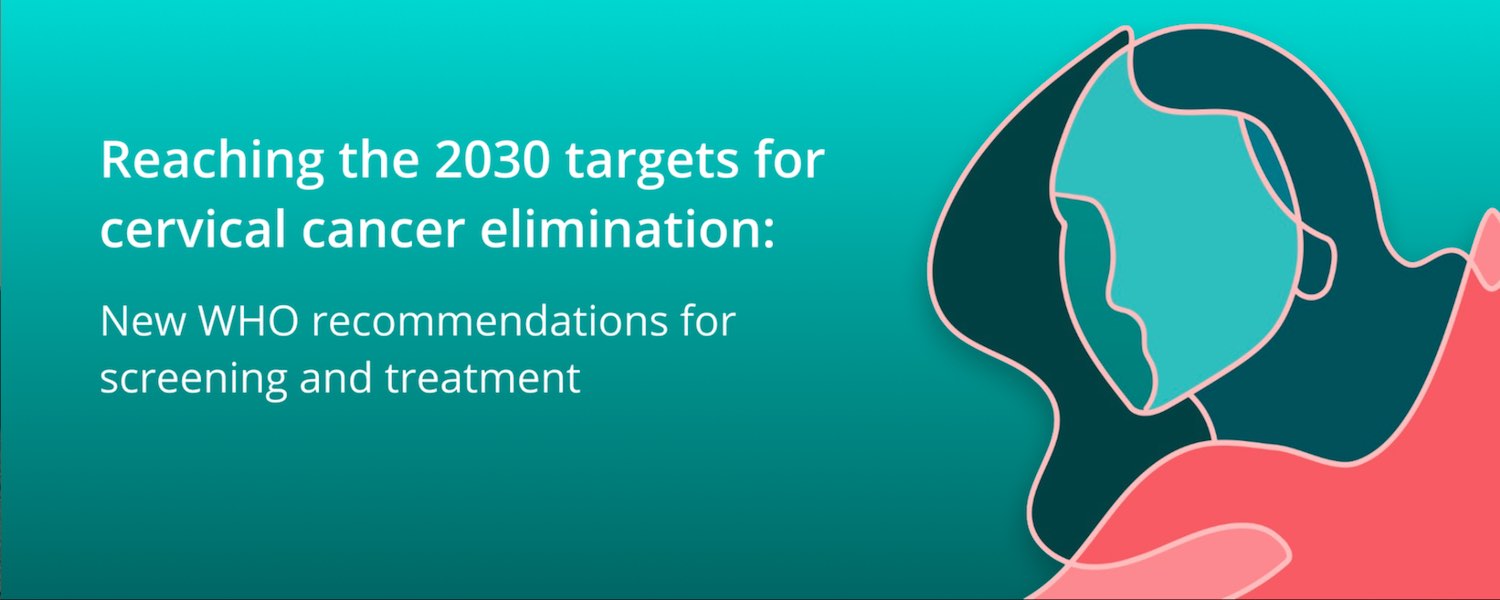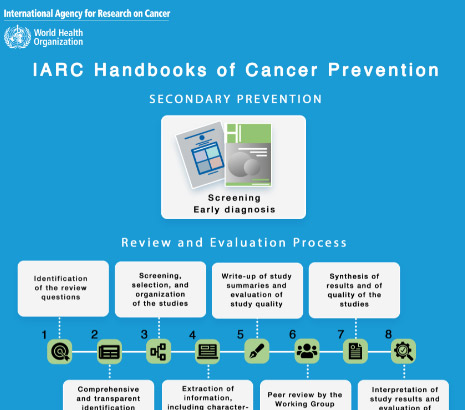 WHO guidelines for screening and treatment to prevent cervical cancer
Home
WHO guidelines for screening and treatment to prevent cervical cancer
Home
Dr Béatrice Lauby-Secretan, Deputy Branch Head of the Evidence Synthesis and Classification Branch of the International Agency for Research on Cancer (IARC), will give a presentation on 6 July 2021 during a webinar organized by the World Health Organization (WHO).
The webinar, titled “Reaching the 2030 targets for cervical cancer elimination: new WHO recommendations for screening and treatment”, is being held to launch the updated WHO guidance for screening and treatment of cervical pre-cancer lesions, best practices, and implications for national programmes. The guidelines include recommendations for the general population as well as for women living with HIV/AIDS.
These new guidelines from WHO are based in part on evaluations of the effectiveness of various methods for cervical cancer screening, performed by a Working Group of international experts convened by IARC to prepare IARC Handbooks of Cancer Prevention Volume 18 on Cervical Cancer Screening.
The IARC Handbooks of Cancer Prevention provide evaluations of the cancer-preventive potential of agents and interventions. For this volume of the IARC Handbooks series, the Working Group evaluated the efficacy of cervical cancer screening in reducing the incidence of cervical cancer and its associated mortality.
Cervical cancer is somewhat unique, because it is one of the few cancer types that can be almost fully prevented. The vast majority of cervical cancer cases (99%) are linked to infection with high-risk (carcinogenic) types of human papillomavirus (HPV), an extremely common virus that is transmitted through sexual contact.
Effective primary interventions (HPV vaccination) and secondary interventions to prevent cervical cancer are available and have already been implemented in many countries. Despite this, in 2020 more than 600 000 new cases of cervical cancer were diagnosed and more than 340 000 deaths from this disease occurred worldwide.
This double burden of high incidence and high mortality occurs mainly (> 90% for both) in low- and middle-income countries (LMICs). The preventable nature of cervical cancer and its disproportionate impact on LMICs with limited health system resources prompted the WHO Director-General to issue in May 2018 a global call for action to eliminate cervical cancer as a public health problem.
In August 2020, the World Health Assembly adopted the Global Strategy for Cervical Cancer Elimination. The IARC Handbooks programme responded promptly to the call for action towards the elimination of cervical cancer by establishing a close collaboration with the WHO group responsible for updating the recommendations for screening and treatment to prevent cervical cancer.
To eliminate cervical cancer as a public health problem, all countries must reach and maintain an incidence rate of fewer than 4 new cases of cervical cancer per 100 000 women per year. Achieving that goal rests on three key pillars and their corresponding targets:
- Vaccination: 90% of girls fully vaccinated with the HPV vaccine by the age of 15 years;
- Screening: 70% of women screened using a high-performance test by the age of 35 years, and again by the age of 45 years;
- Treatment: 90% of women with pre-cancer treated and 90% of women with invasive cancer managed.
Each country should meet the 90–70–90 targets by 2030 to get on the path towards eliminating cervical cancer by the end of this century.
The newly launched WHO guidelines, which draw heavily on the research carried out in preparing the forthcoming IARC Handbooks Volume 18 on Cervical Cancer Screening and other research conducted or coordinated by IARC, aim to help countries achieve these targets as part of the goal of global elimination of cervical cancer as a public health problem.
Cervical cancer screening was first evaluated in Volume 10 of the IARC Handbooks series. Therefore, an update of this volume to evaluate and compare the cervical cancer screening methods currently in use, such as HPV nucleic acid tests, conventional cytology, and liquid-based cytology, was very timely. Volume 18 is scheduled for publication in the fourth quarter of 2021.
WebinarWebinar details
Tuesday 6 July 2021
Two time slots are available to accommodate global audiences:
. Session 1: 9:00 to 10:30 CET (Geneva time)
. Session 2: 14:30 to 16:00 CET (Geneva time)
No registration required.
Link to join: bit.ly/cervicalcancerGL
Password: LAUNCH.123
Read more about the WHO webinar
Read more about the Cervical Cancer Elimination Initiative
Read more about the IARC Handbooks of Cancer Prevention programme
VideosVideos
Video: The IARC Handbooks of Cancer Prevention programme
Dr Beatrice Lauby-Secretan, Deputy Branch Head, Evidence Synthesis and Classification Branch
Infographic
Infographic
IARC Handbooks of Cancer Prevention website
IARC Handbooks of Cancer Prevention website
The website of the IARC Handbooks of Cancer Prevention programme contains information about Handbooks meetings, the Preamble to the IARC Handbooks, and agents and activities evaluated by the IARC Handbooks, as well as links to published Handbooks volumes.Visit website

